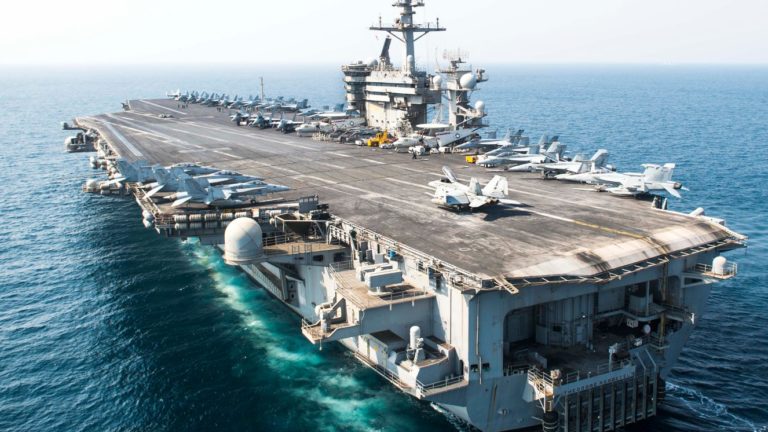The Largest Naval Fleet in the World

Did you know that China has the largest Navy in the world in terms of the number of warships, but numbers do not tell the complete story in naval warfare?
According to a report by the United States Defense Department, China has the largest Navy in the world in terms of the number of warships, with 355 frontline ships in 3 fleets, compared to the US Navy's 305 frontline ships. However, American vessels' average size is larger than Chinese vessels. The report also revealed that China plans to add 70 more warships to its Navy by 2030, while the US may only add 42. The report also highlights the growing naval power of China and the potential challenges it poses to the US in the Asia-Pacific region.
But do numbers tell the complete story?
It is pertinent to highlight here that the power or strength of any navy is not determined by just the number of vessels or ships alone. The technological advancement, the training of the personnel, the efficiency of logistics, the strength of naval alliances, and the availability of funds play an equally crucial role in determining how well a navy may do.
The navy is typically concerned with military operations at sea, and its control of the sea is often powerful in war. It is an instrument utilized for projecting power beyond the shores of countries. As reported by Aljazeera on April 20 2023, Iran's navy commander, Shahram Irani, claimed that an American submarine violated Iran's territorial waters in the Gulf and was forced to surface by an Iranian submarine.
The event highlighted the perpetual military and political tensions in the Persian Gulf, a strategic and significant region for Iran and the US. The two countries have a long history of political conflicts, including the 1979 Iranian Revolution, the Iran-Iraq War, and the US withdrawal from the Joint Comprehensive Plan of Action (JCPOA)
Back in the year 2005, the Chinese navy was nothing to be worried about. Its submarines were mostly old diesel boats, no great threat. It had only one nuclear missile sub, meaning that it had no continuous at-sea deterrent. China had no aircraft carriers and no cruisers.
But now, things have changed – a lot. Today, China's People’s Liberation Army (Navy), the PLAN, has six new nuclear-powered, nuclear armed submarines. At least one is always at sea, unseen and unfindable, ready to launch its 12 ballistic missiles each with three nuclear warheads capable of destroying a city. The PLAN also has nine dangerous nuclear-powered attack submarines.
Entirely new classes of warship have also appeared in the Chinese order of battle. China now has two working aircraft carriers. They aren’t proper carriers: they don’t have catapults, and thus have to launch their jets off a ski-jump ramp, meaning that China’s seagoing jets can’t carry as much as normal warplanes and are limited in their capabilities (the same is true of British carriers, unfortunately).
China’s third carrier, the Fujian, was launched last year (2022) and is still fitting out. She is 80,000 tons at full load displacement: bigger than Britain’s Queen Elizabeth class, and approaching the size of America’s 100,000-ton supercarriers. The Fujian is expected to carry 40 combat jets plus radar planes: and, crucially, she has catapults so these will be fully capable, powerful aircraft. A fourth carrier is expected soon, and reportedly this ship will be nuclear powered like US carriers, and so able to carry more aircraft and operate without refuelling.
The PLAN also has six cruisers nowadays, the Renhai class. Some would classify these ships as large destroyers, but they displace 12,000 tons – more than the US Navy’s Ticonderoga class cruisers, and they carry a similar selection of weaponry. China also has more than 80 regular-sized destroyers and frigates, and a further 50 light corvettes. It’s possible to suggest that these last shouldn’t really count as warships, but they carry weaponry comparable to that planned for Britain’s economy-class Type 31 “frigates”.
Despite the PLAN having more “battle force ships” than the United States Navy (USN), thereby making it the biggest navy in the world, however it’s an apples-and-oranges comparison, as the report is at pains to point out. By other measures, the USN remains well in the lead. The total tonnage of US warships, for instance, is more than twice that of Chinese ones. This means that the US fleet is longer ranging and better able to cope with rough open-ocean conditions, a true blue-water force. It also means that the USN can, and does, carry more weaponry. US surface warships muster more than 9,000 vertical missile launch cells, compared to 1,000 aboard Chinese ones.
Similarly, US vessels are more advanced. China actually has about as many submarines as America, but only 15 are nuclear powered: the rest are still diesel boats. First-class navies don’t bother with diesel submarines, because in many ways they aren’t really submarines at all. When fully submerged they have to run on battery power, which means they have very little range or speed.
Sources: https://finance.yahoo.com/news/15-most-powerful-navies-world-192355501.html https://www.telegraph.co.uk/news/2023/05/19/chinese-navy-plan-worlds-biggest-usn-top-for-now/
#penglobalfactfile #naval #fleet


_1755775186.jpg)
